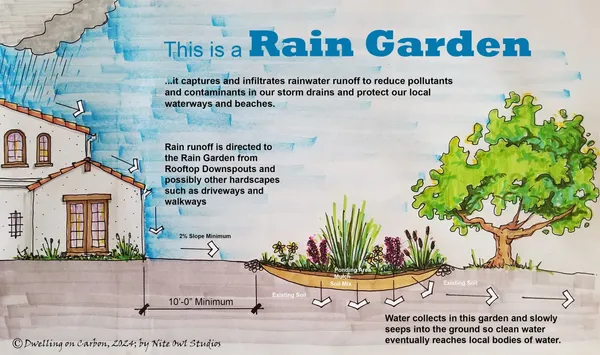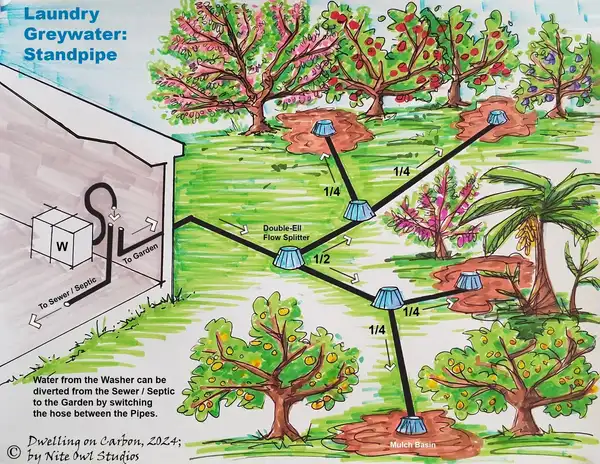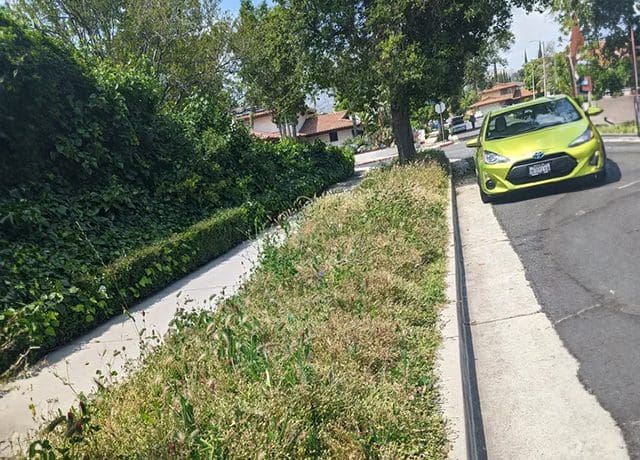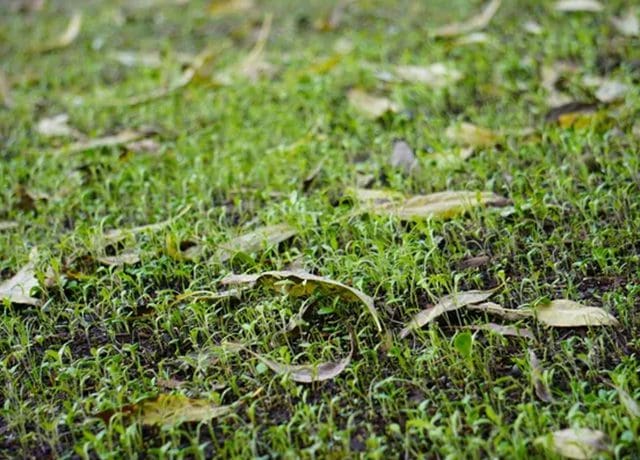WHAT WE DO


RAIN GARDEN
Dwelling On Carbon will be installing rain gardens and simple greywater systems for locations that can benefit from these but lack funding – such as churches, women’s shelters, and schools. These projects will be funded by volunteer labor and grants. The rain gardens will serve to infiltrate rainwater onsite and grow native landscapes and fruit trees. These rain gardens will provide multiple benefits: keep stormwater onsite to prevent damage to downstream beaches and waterways; conserve water for irrigation; cool the urban heat island with plant evapotranspiration; and provide pollinator habitat for native bees, biodiversity, and potentially growing food. We plan to develop neighborhood programs in which one household per block is trained to lead others in rain garden installation for their neighbors – to have a wider impact on the local climate.
LAUNDRY GREYWATER SYSTEMS
Dwelling On Carbon will install simple greywater systems to save water, grow edible landscapes, and cool neighborhoods with shade and evapotranspiration. Our work will include educational signage and training with DIY resources, so these practices can be implemented widely.

REWILDING YOUR LAWN
MIX IT UP WITH MOWABLE PLANTS
Polyculture or “rewilded” lawns are produced by overseeding existing turf lawns with seeds from up to 30 different species of perennials, annuals, and native grasses. Unlike typical lawn conversions, which require a lot of labor to cut out existing turf and prevent it from reseeding, polyculture or rewilded lawn conversions work with the existing turf. The basic steps for polyculture lawn conversion include cutting the existing turf to 2” and using dethatching and aeration to prepare the soil for the new seeds, which are applied in a layer of compost. Once the new species have germinated, the water requirements for the polyculture lawn will decrease substantially, with the bulk of species having low to moderate water needs. Polyculture lawns are a fairly simple approach to providing many needed ecosystem services, including carbon sequestration, cooling the urban heat island, pollinator habits, biodiversity, and building soil health.


What is Carbon Sequestration?
Biological carbon sequestration uses the process of photosynthesis to remove carbon dioxide from the atmosphere with the energy of sunlight and store the carbon in plant tissue and soils. In soils, carbon is stored in soil organic matter, which provides food for the soil microbes that support plant life. Microbes inhabit both above-ground aspects of plants (leaves and stems) and below-ground in association with roots (see graphic below). These microbes support all stages of plant growth, promote resistance to stresses such as pathogens and drought, and assist plants with nutrient uptake.







